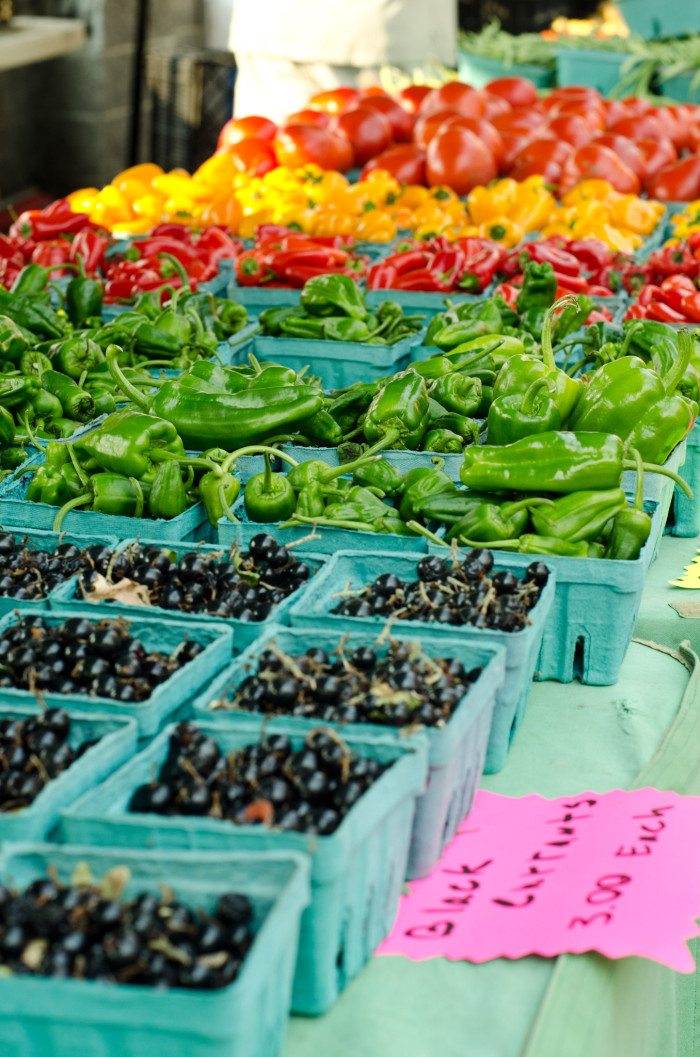 “This story about good food begins in a quick-stop convenience market,” begins Barbara Kingsolver’s Animal, Vegetable, Miracle: A Year of Food Life, a narrative of the year that her family decided to forgo convenience and support their community by buying only locally grown food.
“This story about good food begins in a quick-stop convenience market,” begins Barbara Kingsolver’s Animal, Vegetable, Miracle: A Year of Food Life, a narrative of the year that her family decided to forgo convenience and support their community by buying only locally grown food.
Kingsolver continues: “Food culture in the United States has long been cast as the property of a privileged class. It is nothing of the kind. Culture is the property of a species.” Let me qualify that statement for her: If by “food culture” you mean the ability to shop solely at your local health foods store, then that is a “property of the privileged class.” Take it from me, someone who after two to three $100+ quick trips to the store very quickly realized that I’m just not rich enough to shop at brand name stores like Whole Foods.
Fortunately for us, buying locally does not necessarily mean loyally shopping at that expensive health foods store. Farm to table movement in its truest sense does not require you to fit into a socially constructed type–like food-as-status-symbol bourgeois, Brooklyn hipster, or barefoot, tie-dyed hippie. The core of the local food movement is simply an awareness of where and how your food is grown, and an attempt to minimize our environmental impact and encourage local economy–which anyone can feel proud to support, wherever they stand on the socioeconomic, political, and cultural spectrum.
How can you act locally when your pockets are very much bottomed (which I presume is the opposite of bottomless)? By knowing, growing and showing. Let me explain:
1. Know what’s in season. Our information age means there’s no excuse for not knowing what’s in season! The first step to going local is knowing what cannot possibly be local. Refer to guides like eat the seasons or Eat Well Guide so that you’re not tempted by anachronistic fruits and veggies.
While I stand by my suggestion that you learn a little about your region and its growing seasons, you could also stay local without that research if you stick to the farmers’ market rather than the big box grocery store. As far as price comparison goes, you’re safest if you collect your own competitive intel by noting prices at your farmers’ market and then stopping by the grocery store to compare. Here’s an article from Farm Aid detailing a similar exercise and its finding that there are deals and steals at each.
2. Grow what you can. Have a backyard, a patio or a sunny windowsill? Then you’ve got what you need to start a garden! Now, that’s not to say that you need to get off the grid and stick to the veggies that you’re able to grow. If that was the case, I’d be eating a lot of basil salads. And by that I mean salads comprised solely of basil leaves. Grow staples like lettuces, tomatoes and herbs and then fill in the gaps by joining a CSA (or “Community Shared Agriculture”). Google “[Your city name] CSA” to find one that is available in your area.
3. Show your passion. Remember back to when you first decided to go vegan? You were probably a bit overwhelmed because of the wide variety of not-so-vegan options. Going local is likely to feel the same, so approach it in a similar way! Make local food one of your passions. Visit local farms to get to know your farmers. Save a few dollars for a splurge on a coffee and then make Saturday morning Farmers’ Market less of an errand and more of a weekly event. Learn more about the community that you’re supporting with your new lifestyle and you’ll be more likely to stay committed to it.
The key takeaway is that choosing to go local means that you’re going to be sacrificing convenience. Rather than being able to run into a one-stop shop and grab everything you need, shopping is going to be a conscious exercise from here on out. That’s not necessarily a bad thing though–when you put more thought into preparation then you’ll get more out of the food that results from it.
See also: Photo Essay – Late Summer Farmer’s Market in Bend, Oregon
Also by Laura: Does Working from Home Really Boost Your Happiness?
Photo: Austin Dudley




